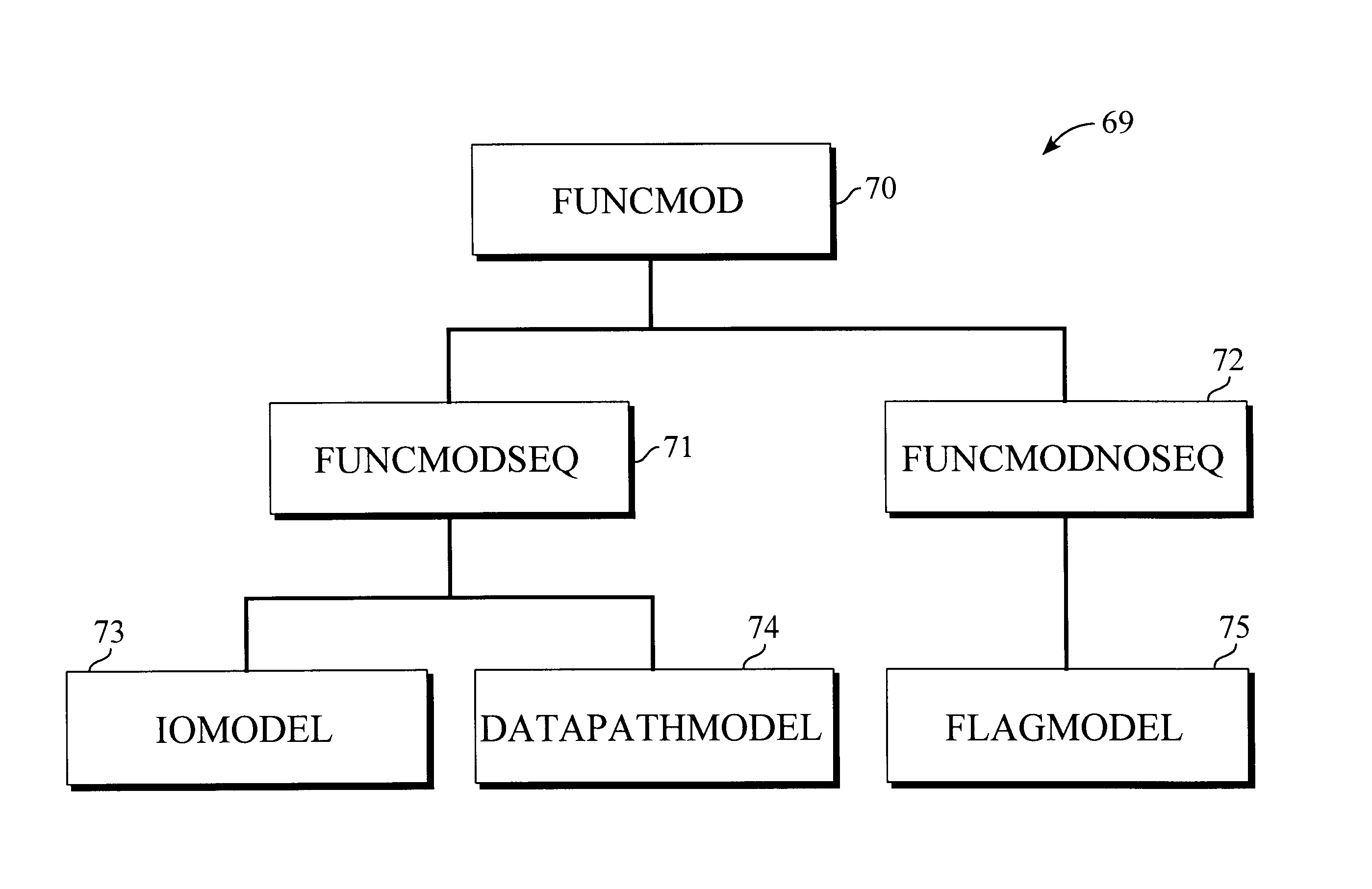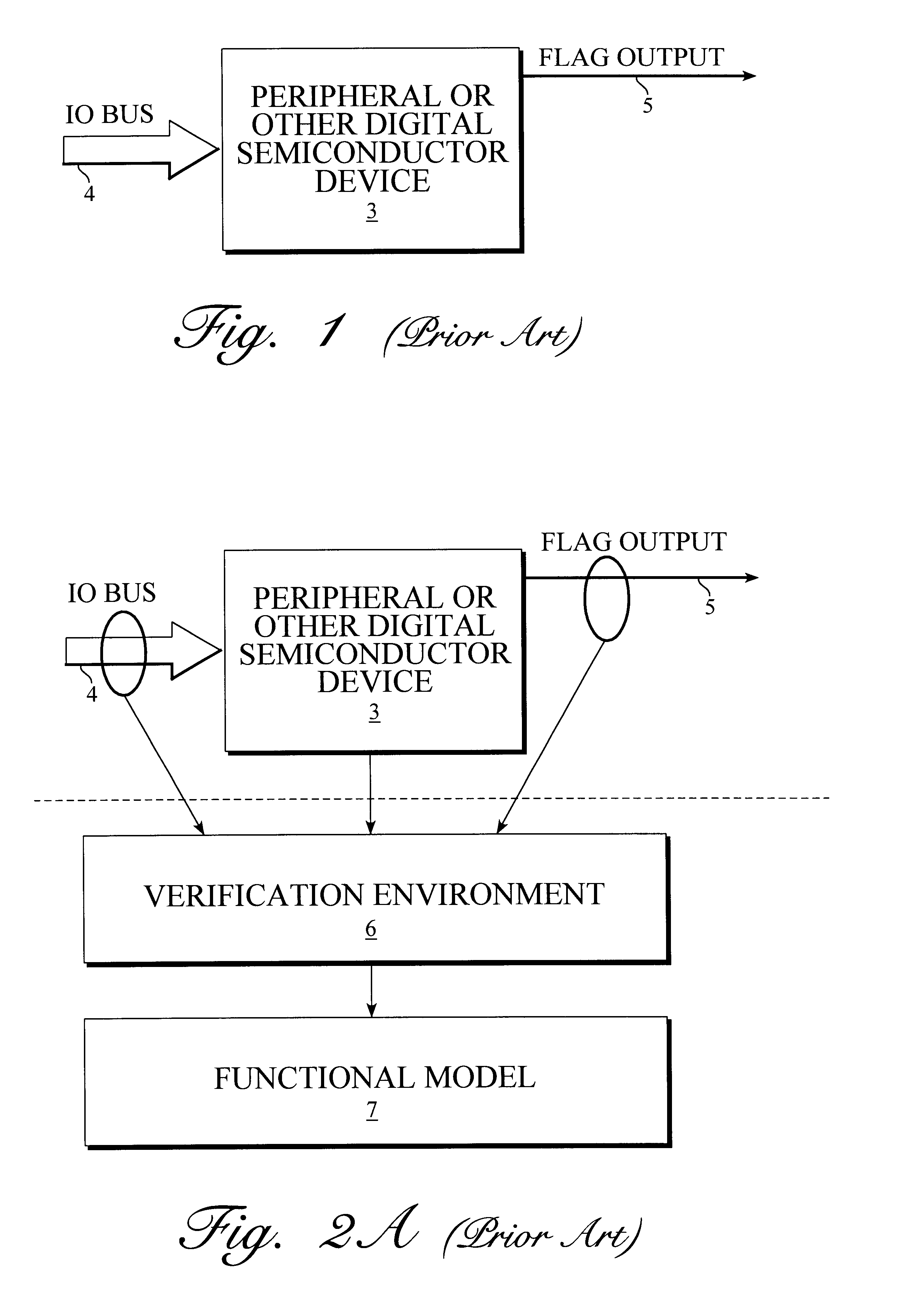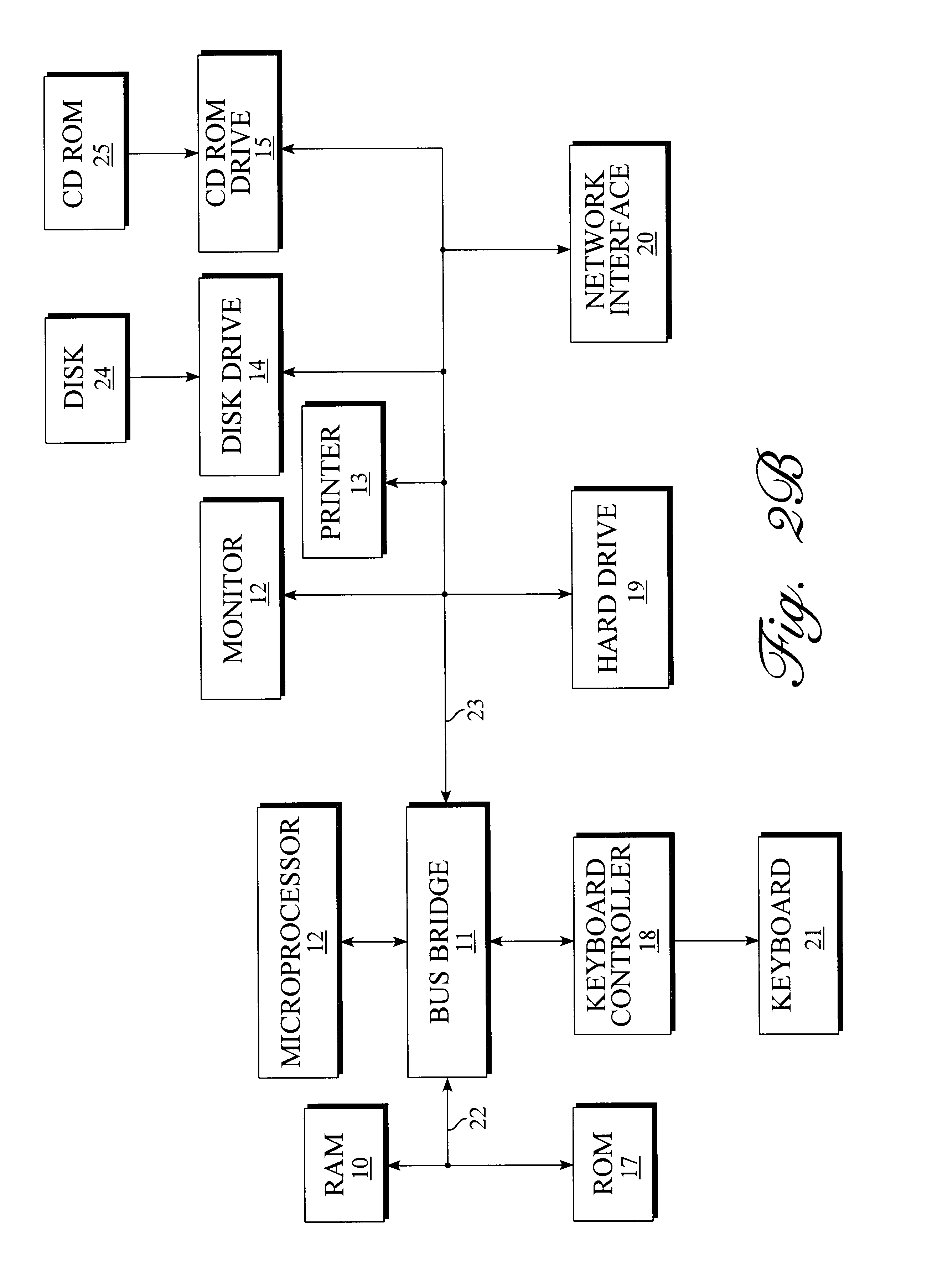System and method for reducing computational overhead in a sequenced functional verification system
a functional verification and sequenced technology, applied in the field of functional verification operations, can solve the problems of unavoidable race conditions, hdl simulation cannot guarantee an identical evaluation under race conditions, and pre-silicon verification operations consume as much as 50% of the total design time of system-on-a-chip projects
- Summary
- Abstract
- Description
- Claims
- Application Information
AI Technical Summary
Benefits of technology
Problems solved by technology
Method used
Image
Examples
Embodiment Construction
Referring now to FIG. 1, there is shown a block diagram of a selected peripheral system 3 which is well known. The peripheral system 3 is connected to an input / output (IO) bus 4 connected to a master system such as a digital signal processor (DSP) chip (not shown) which controls its activities and with which it communicates. The peripheral system 3 produces an output flag signal on an output line 5, for communication with the DSP. In FIG. 1, a simple race condition may occur during an IO cycle, when data is driven into the peripheral system 3 with a particular address and data. As a result of receipt of this data, the peripheral system 3 is caused to assert a particular logical value at its output flag. A functional verification model is typically used to verify a required device functionality for the peripheral system 3, according to the following rules:
First, the output flag is asserted after every input / output cycle, to indicate completion of the particular cycle.
Second, the outp...
PUM
 Login to View More
Login to View More Abstract
Description
Claims
Application Information
 Login to View More
Login to View More - R&D
- Intellectual Property
- Life Sciences
- Materials
- Tech Scout
- Unparalleled Data Quality
- Higher Quality Content
- 60% Fewer Hallucinations
Browse by: Latest US Patents, China's latest patents, Technical Efficacy Thesaurus, Application Domain, Technology Topic, Popular Technical Reports.
© 2025 PatSnap. All rights reserved.Legal|Privacy policy|Modern Slavery Act Transparency Statement|Sitemap|About US| Contact US: help@patsnap.com



